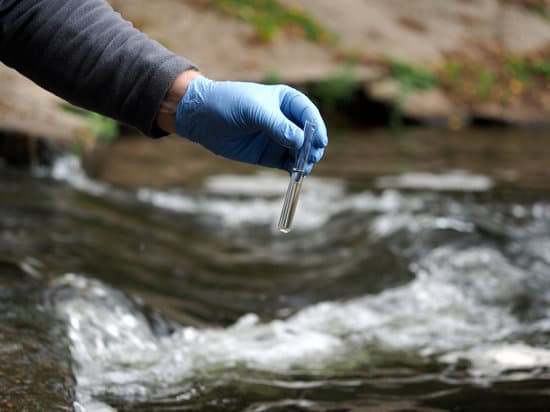Water is an essential component of living, and it also gets degraded in quality when it contains an excess of unwanted chemicals and harmful microorganisms. Water gets polluted by various reasons, and sources of water bodies have many uses, such as the public use of agricultural, industrial, fisheries, and recreational use.
Water quality is relative to the intended purpose because there are many aspects of water pollution, and there are many variables that determine water quality for a given use. Ions like nitrates hydroxides and chlorides are entirely soluble in water and are called dissolved solids. The major factors controlling the quality of water are physical, biological, and chemical.
The quality of water is analyzed based on its natural occurrence. Chemical water is a natural form of water where we have a chemical composition as H2O. Portable water like water available in the bottle is fit for drinking. Palatable water looks pure from its appearance, but it may be harmful substances. Wholesome water is chemically not refined, and it does not contain any toxic substances. Polluted water contains hazardous material, and contaminated water contains harmful pathogens like viruses that cause dengue and typhoid.
We distinguish water into two categories, hard water, and soft water. Hard water is like salty water, and it contains calcium and magnesium ions in the water. It does not produce a lather with soap, and there are two types of hard water, temperament hardness, and permanent hardness. The temporary hardness is the result of the presence of carbonate and bicarbonate ions of calcium and magnesium ions.
We analysis base on various parameters and methods used for water investigation. The physical characteristic of water quickly determined analysis on an abstract level with its physical features like color, odor or smalle, turbidity, PH value, conductivity, and Total solid dissolved (TDS). The other chemical properties that water test happens on its hardness, the level of calcium, magnesium, chloride, sulfate, alkalinity, and nitrate molecules. Water analysis also contains critiques of the toxic metals inside water like Copper, Chromium, Cadmium, Zinc, Lead, Mercury, and Iron.
The turbidity degree of water tells how clear is water when seeing with naked eyes. For example, when you add a tablespoon of sand in a glass of water. The sand will reside in the base, and water will be clear enough. However, as soon as you start stirring the water along with precipitated sand, water will lose its clarity, and it will begin to become brown. If the water becomes 30% unclear, then we can say the turbidity of rain is 30% turbid. Turbidity is usually high in water deficit regions.
Water is often a conductor of electricity depending upon the number of dissolved salt present in water. Typically, two essential factors for water analysis that we need to consider. First is, what substances and organisms we are interested in testing in water and second are, what procedures and equipment do we use to make the measurements.
Water contains organic nutrients like BOD, COD, Phenols, Oil, Pesticide, and ammonium nitrate. Element tests by dissolving other chemicals into water samples. During water scarcity, organic and inorganic compounds are analyzed regularly to make sure water is not contaminated and drinkable.
The bacteria total coliform and fecal coliform would impact severely on animal bodies and may also lead to physical disinformation of the body. Surprisingly water may contain a higher level of radioactive alpha and beta emitters that go through analysis during the wastewater filtration process.
For drinkable water, the total coliforms organism must be less 50 mm per 100 ml; Ph must be between 6.5 – 8.5, and dissolved oxygen must be between 6mg or more. For non-drinkable use, total coliform must be less than 500mg per 100 ml; pH must be between 6.5 – 8.5, and dissolved oxygen must be more than 5mg/l. For wildlife and fisheries, pH must be between 6.5 and 8.5, dissolved oxygen greater than 4mg/l, and free ammonia. For irrigation and industrial use, pH must be between 6 – 8.5, sodium absorption ration less than 26, and electrical conductivity at 25-degree Celcius micromhos/cm.
The inland surface water is in a multitude of proportions of dissolved oxygen, biochemical oxygen, chlorides, boron, PH value, arsenic value, iron, lead, copper, and fluorides. Water filtrations systems use PH meter to measure PH value in water. The chemical reactions in water depend upon its acidity and fundamental PH values. For example, If water is acidic, chemical reactions will not happen on the water. PH values are also useful to determine wastewater treatment and water supply. PH values of water differentiate across water scarcity areas.
Total dissolved solids classify if the water is reusable. If the water has higher TDS, then it is not usable and may cause diseases like gastrointestinal irritation and also ideal for industrial use. TDS is determined by vaporizing water and sometimes prolong drying and desiccate to measure the portion of solids that passes filters.
Water analysis outline involves bioassay tests where oxygen is measured depending upon how much oxygen microorganism consumes when water is kept in the open air. The process termed aerobic conditions. If required, water examination involves an argentometric method where chloride is measured based on the organic alkaline solution using potassium chromate value indicators.
The level of dissolved oxygen is critical in water analysis to measure the condition of polluted water. Many factors affect the concentration of dissolved oxygen in the stream. It includes temperature, as oxygen dissolved quickly in cold water flow because the level of oxygen varies with the volume and velocity of water flowing in the stream. Faster the flow of water, the more will be the concentration of oxygen entering the water from the atmosphere.
